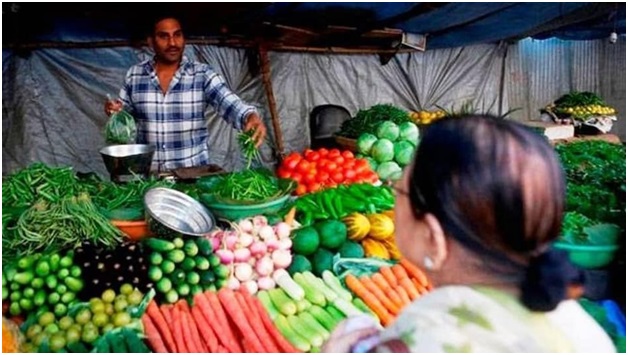India's Supply Chain Opportunity (Indian Express)

- 15 Sep 2023
Why it is in News?
Nevertheless, the declaration made during the G20 Leaders' Summit about the India-Middle East-Europe Economic Corridor (IMEC) has the capability to position India as a key player in the Asian segment of global supply chains. This holds substantial importance as part of endeavors to reduce reliance on supply chains centered around China.
What Are Supply Chains?
- A supply chain encompasses all the stages involved in delivering a final product or service to the customer, starting from raw material producers.
- It involves strategically locating various production stages (like design, production, assembly, marketing, and service activities) in a cost-effective manner.
- Global supply chains have been the dominant model of industrial production since the 1980s, shaping the trajectory and character of globalization and regionalization.
- These global supply chains are prevalent in a wide spectrum of industries, from simpler ones like textiles, food processing, and consumer goods to more intricate sectors such as automobiles, aircraft, machinery, electronics, and pharmaceuticals.
Why Are Global Supply Chains Shifting Away from China?
- Presently, China plays a significant role in global value chains, contributing to nearly 20% of global manufacturing trade and a substantial share of key inputs required for production within global value chains.
- Nevertheless, even before the Covid-19 pandemic, Western companies were progressively reducing their dependence on China as a sourcing market, and its appeal among Western buyers was waning.
- This shift was driven, in part, by increasing labor costs and supply chain challenges within China, along with concerns among investors about tighter regulation of foreign businesses.
- Additionally, the trade disputes between China and the US prompted multinational companies to reconsider their global sourcing strategies.
- Certain segments of Chinese supply chains, especially those reliant on labor-intensive processes, were relocating to more cost-effective locations.
- However, complete relocation from China is challenging due to the substantial costs associated with shifting supply chains, including establishing new facilities and recruiting and training workers, among other factors.
Why are India and Southeast Asia Considered Favorable Supply Chain Destinations?
- Southeast Asia has been successful in luring foreign companies due to its combination of low labor costs, tax incentives, and enhanced logistical capabilities.
- Notably, countries like Vietnam and Thailand have emerged as prominent choices for supply chain relocation.
- India, however, is poised to become an accompanying manufacturing hub in Asia alongside China by leveraging foreign technology transfers and creating value-added employment opportunities. This is evident in various developments:
- Increased production of iPhones within India.
- Early-stage technology transfer for the technologically advanced Mercedes Benz EQS to India.
- Foxconn Technology Group's establishment of a chip-making fabrication plant in Gujarat.
- India's existing manufacturing sectors, including automobiles, pharmaceuticals, and electronics assembly, already possess sophistication and are likely to excel in this competition.
- Foreign investors are drawn to India due to both geopolitical and economic considerations.
- India's services sector, encompassing ICT, back-office functions, financial and professional services, as well as transport and logistics, is also positioned for success.
Initiatives Taken by India to Strengthen its Supply Chain Network:
- Since 2022, the Indian government has prioritized preferential trade through various bilateral agreements with trading partners.
- The UAE-India Comprehensive Economic Partnership Agreement became effective in May 2022.
- Ongoing discussions aim to finalize the Australia-India free trade agreement (FTA) by the close of 2023. Negotiations are also underway for UK-India and EU-India FTAs.
- The Indian Prime Minister's visit to Washington DC in June 2023 underscored the pivotal role of supply chains in India-United States relations.
- These new agreements with Western trading partners signify a commitment to extensive economic integration, surpassing India's previous FTAs, which primarily focused on goods trade and related measures.
Path Ahead for India - Drawing Lessons from China's Success:
- Encouraging foreign direct investment (FDI) with an export focus remains a key strategy for engaging in supply chains.
- Local businesses must devise strategic approaches to integrate into global supply networks.
- Large conglomerates can allocate resources and costs effectively among their business units.
- Small and medium-sized enterprises (SMEs) can play pivotal roles as industrial suppliers and subcontractors for major exporters.
- Strategic moves such as mergers, acquisitions, and collaborations with multinational corporations and prominent domestic enterprises are sensible steps.
- Investing in domestic technological capabilities to meet international benchmarks for price, quality, and timeliness is crucial.
- Identifying and targeting multinational corporations involved in industries where India holds a potential comparative advantage, coupled with improved coordination between central and state governments, is essential.
- Investing in higher education in fields like science, technology, engineering, and mathematics is a forward-looking approach.
- Caution should be exercised when contemplating the adoption of China's interventionist state model, as it carries significant risks of government failures.
- Engaging with think tanks to gain insights into effective strategies is a prudent course of action.
- India stands at a pivotal moment in history to foster industrialization in South Asia, which would enhance regional stability, create employment opportunities, and reduce susceptibility to Chinese influence.
- To promote regional supply chains, the Indian government should consider the following policy actions:
- Expanding the Make in India Programme into a broader Make in South Asia Programme.
- Establishing a comprehensive bilateral Free Trade Agreement (FTA) with Bangladesh.
- Enhancing the Indo-Sri Lanka FTA to bolster regional trade and investment based on established rules.
- Without forging connections within South Asia, India's appeal to the Global South remains limited. The emerging supply chain opportunities with the United States offer India a promising pathway to embark on its journey of global integration, while maintaining a 'Neighbourhood First' approach.
Latest NSO Data on Inflation in India (The Hindu)

- 14 Sep 2023
Why it is in News?
- Recent data from the National Statistical Office (NSO) reveals that India's retail inflation rate decreased to 6.83% in August.
- This decline came after hitting a 15-month high of 7.44% in July 2023, primarily because of falling prices of food items, particularly vegetables.
- However, it's worth noting that the inflation rate still remains above the upper limit of the Reserve Bank of India's (RBI) medium-term inflation target range of 4+/-2%.
Key Points from the Recent NSO Data:
- In August 2023, retail inflation stood at 6.83%, marking the fourth instance this year and the seventh since August 2022 where it exceeded the upper limit of the target.
- Policymakers are increasingly concerned about high inflation rates.
- In its recent monetary policy review, the RBI maintained the key repo rate at 6.50% but raised the inflation projection for FY2024 from 5.1% to 5.4%.
- In the Index of Industrial Production (IIP), manufacturing showed improvement, rising to 141.2 in July from 135 a year ago and 141.1 in the previous month.
- Of concern, consumer durables contracted by 2.7% year-on-year in July 2023, indicating weaknesses and imbalances in consumption demand.
Key Insights from the Recent NSO Data:
- Consumer Confidence Declines: In August 2023, consumer sentiment dropped by 1.5%, breaking a streak of continuous increases since January 2023.
- This decline can impact the Indian economy and businesses, particularly in anticipation of the upcoming festive season.
- A significant contributor to this drop is a decrease in consumers' intentions to buy consumer durables like cars and TVs.
- This pessimism is not only due to stagnant perceived incomes but also concerns about future earnings.
- Persistent Inflation: According to RBI projections, inflation is expected to remain above 5% until the first quarter of 2024-25, with the likelihood of reaching 6.2% in the current quarter (July-September), which is beyond the RBI's comfort zone.
- Although overall food inflation has moderated, certain food items like cereals, pulses, and milk are experiencing upward price momentum.
- Factors such as irregular rainfall and low reservoir levels pose further risks to food inflation.
- Additionally, the recent surge in global crude oil prices is a cause for concern. However, the continuing deflation in the Wholesale Price Index (WPI) will have a delayed impact on Consumer Price Index (CPI) inflation.
- The government's decision to reduce cooking gas prices by Rs 200 per cylinder is expected to benefit domestic LPG consumers and those under the Pradhan Mantri Ujjwala Yojana (PMUY).
- India's GDP Growth Prospects: India's potential GDP growth rate has steadily decreased from around 8% just before the Global Financial Crisis of 2008-09 to 6% before the Covid pandemic.
- The potential GDP growth rate represents the rate at which an economy can expand without causing high inflation.
- The temporary increase in India's GDP growth rates in 2020-21 was primarily due to a lower base.
- The Indian economy faces various challenges, including a slowing global economy, elevated oil prices, and climate change. Economists estimate that, under a business-as-usual scenario, India's economy cannot grow more than 5% over the next decade.
- While this growth rate may be attractive from a global perspective, it may not be sufficient to meet the employment needs of India's large youth population.
What is Inflation?
- Inflation signifies an increase in prices, resulting in a decrease in the purchasing power of money over time.
- The rate at which purchasing power diminishes is measured by tracking the average price increase of a specific set of goods and services over a specified period.
- This price hike, typically expressed as a percentage, signifies that a unit of currency can purchase fewer goods and services compared to previous periods.
- In contrast, deflation occurs when prices fall, leading to an increase in purchasing power.
What are the causes of inflation?
- Demand-Pull Inflation: This occurs when the demand for goods and services exceeds their supply.
- When demand is high and supply is limited, businesses often raise prices, leading to inflation.
- It's often associated with strong economic growth.
- Cost-Push Inflation: In this scenario, rising production costs, such as increased wages or the cost of raw materials, force businesses to raise prices to maintain their profit margins.
- Oil price spikes are a classic example of cost-push inflation.
- Built-In Inflation: Sometimes called wage-price inflation, this happens when workers consistently demand higher wages to keep up with rising prices.
- Businesses then raise prices to cover increased labor costs, creating a cycle of inflation.
Categories:
- Consumer Price Index (CPI): This index calculates the weighted average of prices for a basket of goods and services at the consumer or retail level.
- Wholesale Price Index (WPI): The WPI monitors price changes for goods in stages before reaching the retail level.
Inflation Targeting in India:
- The RBI Act of 1934 establishes a legal and institutional framework for ensuring price stability while also considering growth objectives.
- In 2016, the Finance Act amended the RBI Act to establish a Monetary Policy Committee (MPC).
- The MPC issues a bi-monthly Monetary Policy Report to set India's benchmark interest rate, enhancing transparency and accountability in the country's monetary policy.
- The current mandate of the MPC is to maintain an annual inflation rate of 4% (with a tolerance range of +/-2%).
- If inflation exceeds this range for three consecutive quarters, the committee is accountable to the Government of India.
Mains Question:
- How does the RBI's inflation targeting framework impact India's economic stability and growth? Discuss the tools and effectiveness of RBI's strategies in controlling inflation. (10 M)
